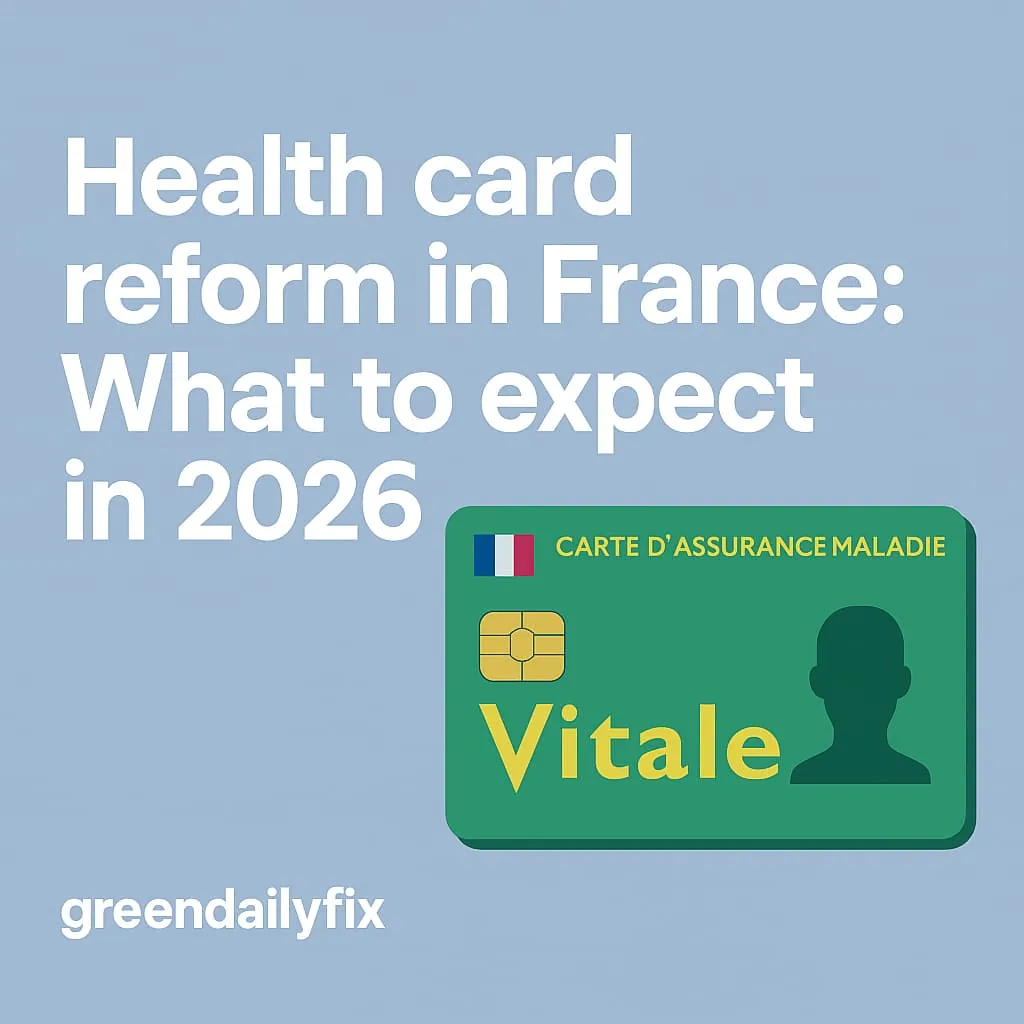
Europe’s New 2026 Health Card Reform: What Changes for Travelers and Expats
Starting July 2026, the European Health Insurance Card (EHIC) undergoes a major overhaul: a fully digital version, new renewal rules and important changes for expats. With mobility at an all-time high, understanding these new obligations is essential for anyone who travels or lives between countries.
1. Why this reform in 2026?
The EU wants a more unified, secure and up-to-date system for cross-border healthcare. Today, roughly 1 in 5 European Health Insurance Cards (EHIC) in circulation is expired or incorrectly linked to the holder's file. This leads to treatment refusals, up-front payments and a lot of paperwork for public insurers.
The 2026 reform aims to:
- fully digitalise the EHIC across member countries
- harmonise access rights for temporary stays
- reduce fraud and cards used outside entitlement
- speed up reimbursements through automated data exchange between national funds
2. A fully digital European health card
From July 2026, the EHIC will progressively move into a secure European digital wallet. In practice, each insured person will have:
- a digital EHIC card stored in a European mobile app
- a unique QR code that hospitals and clinics can scan to check your rights in real time
- a printable version for emergencies or providers who are still offline
For people insured in France, most requests will still start on ameli.fr before being synchronised with the European app once it goes live.
Read also: Greener travel habits 2025
3. New renewal rules
Today, many citizens discover too late that their EHIC has expired.
From 2026 onwards:
- the standard validity will move to 3 years in most countries
- renewal will be automatic as long as you remain insured in the same country
- you will receive reminders and status updates via the European app or your national portal
Expats will need to make sure their tax status, main residence and country of affiliation are aligned. Any change of job, country or status (student, detached worker, pensioner) should be declared promptly on ameli.fr or the equivalent national portal.
4. What changes for expats and cross-border workers
For mobile citizens, cross-border workers and long-term digital nomads, the 2026 reform is a real turning point.
Key changes include:
- an obligation to choose one principal country of affiliation that carries primary responsibility for your healthcare
- more systematic real-time checks between national systems to avoid double coverage or gaps
- simplified rules for cross-border workers (for example between France and Switzerland, Luxembourg, Belgium or Germany)
Complex situations such as split residence, multi-country work or shared retirement will increasingly be handled through dedicated bodies like CLEISS for people connected to the French system.
5. Climate risks and emergency coverage
Another innovation is the explicit inclusion of health incidents linked to extreme climate events when a public emergency plan is activated in the host country.
This may concern for example:
- heatwaves leading to dehydration or cardiovascular emergencies
- floods causing injuries, hypothermia or water-borne infections
- storms, wildfires or landslides linked to climate disruption
The idea is to ensure that travellers are not left without coverage when climate events disrupt their stay.
Read also: Adapting to changing weather in 2025
6. What changes for occasional travellers
For people travelling a few days or weeks per year in Europe, the reform will translate into:
- better recognition of your rights in public hospitals and contracted clinics
- the end of most old-style paper forms
- simpler reimbursement requests directly from the European app
- an offline QR code that still works without mobile data
Remember that the EHIC is not a substitute for private travel insurance: it does not usually cover repatriation, some dental care or high-risk sports. Always check exactly what is included before you travel.
Read also: Greener travel habits 2025
7. Preparation checklist for 2026
Here are a few steps you can already take:
- Check the expiration date of your current EHIC and request a renewal if it ends within the next 6–9 months
- Update your address, contact details and family situation on ameli.fr or your national portal
- Follow announcements on the European Commission website and only download the future EU health app from official stores
- If you are an expat or cross-border worker, clarify with your insurer which country will be your principal affiliation from 2026 onwards
It is also wise to store scanned copies of your passport, EHIC, private insurance policy and key medical documents in a secure digital space.
Frequently Asked Questions
Will the 2026 EHIC replace my national health card?
No. The EHIC is meant for temporary stays abroad, while your national card remains the reference for everyday care in your home country.
Will I still need a plastic card?
In most cases, the digital card and its QR code will be enough. You will still be able to print a paper certificate from ameli.fr or the European app for providers who are not yet equipped.
Does the EHIC cover planned medical treatment abroad?
Generally not. The card focuses on medically necessary care during a temporary stay (emergencies, unexpected illness, continuity of chronic treatment). Planned procedures usually require prior authorisation.
Does the 2026 reform change anything for the UK or Switzerland?
Rules will continue to be based on specific bilateral agreements. Before travelling, always check the latest information on CLEISS or your national health insurance.
Conclusion: The EHIC 2026 reform fully modernises healthcare access across Europe — simpler, faster, digital and better suited for today's mobile citizens.
About the author:
Alexandre Dubois is a French sustainability enthusiast sharing practical tips for greener living. With years of experience in energy efficiency consulting, he helps households reduce their environmental impact without sacrificing comfort. Contact: info@greendailyfix.com
Related posts

Green Friday 2025: The Sustainable Alternative That’s Finally Overtaking Black Friday
While Black Friday triggers more than €20 billion in European spending each year, 2025 marks a powerful shift: the rise of Green Friday. Born as a reaction to overconsumption and the environmental cost of fast retail, the movement is finally capturing mainstream attention. More than 300 major European brands have announced that they will refuse aggressive discounts, instead promoting repair, second-hand products and ethical shopping.

Zero-Waste Winter Cooking: Turning Leftovers into Comfort Meals
As winter sets in, our meals get heartier — and our fridges fuller. Unfortunately, that often means more food waste. But zero-waste cooking isn't about restriction; it's about creativity and comfort. Here's how to turn leftovers into cozy, money-saving winter meals.

Stay Warm Without Breaking the Bank: Heating & Budget Tips for Winter 2025
Energy prices are rising again, and winter is coming. The good news: simple actions can keep your home warm without blowing your budget. From thermostat tweaks to daily habits, here's your practical guide to a cozy, cost-efficient winter.

Night of Lanterns: Bringing Meaning Back to Halloween
Beneath the layers of plastic and candy, Halloween hides an ancient, poetic story — that of **Samhain**, the Celtic festival marking the end of light and the start of the dark season. This October 31, instead of consuming, what if we returned to celebrating — by lantern light, in respect for nature and remembrance?